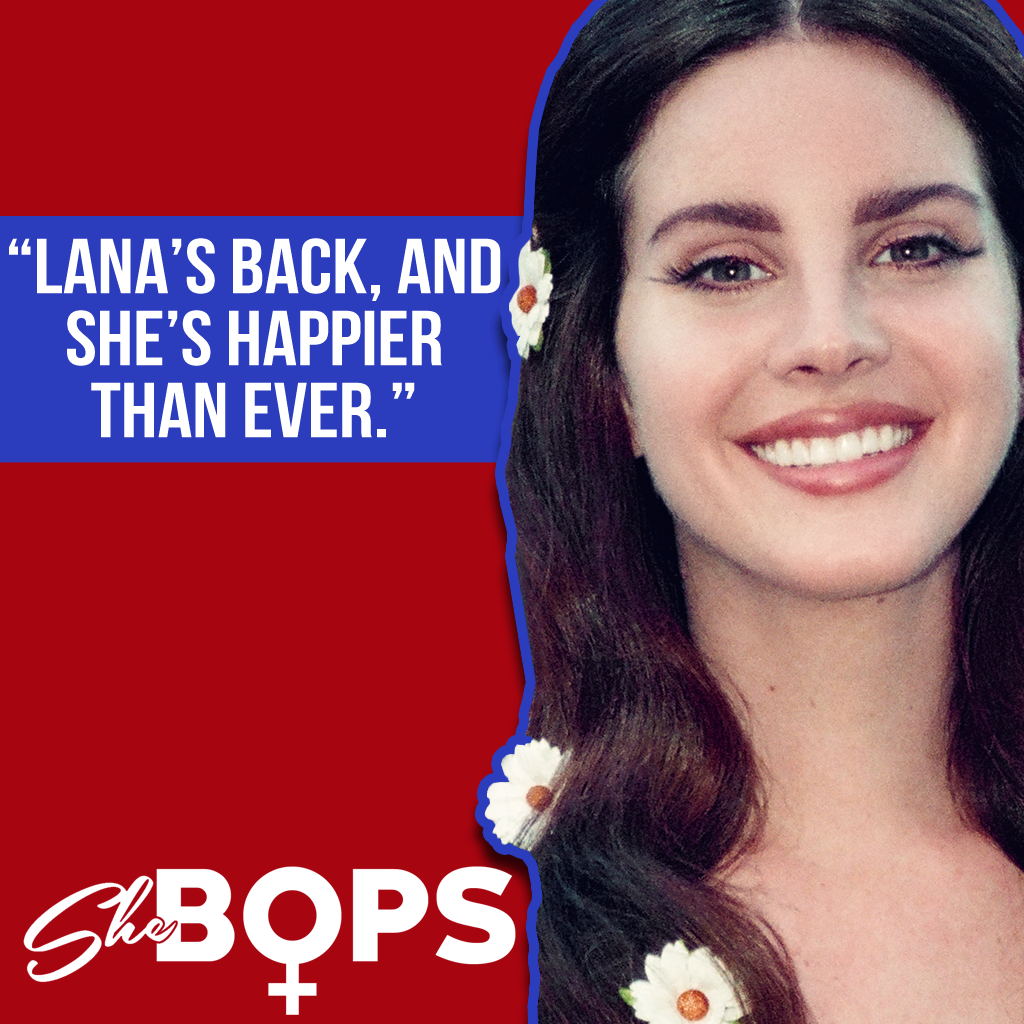
Lana Del Rey has returned from her Honeymoon on top form again. The vintage queen is back, and she’s happier and more insightful than ever.
Sonically, Lust for Life is not adventurous as it is lyrically. As ever, lush atmospheric strings, monochrome pianos and twangy Tarantino guitars spread across creeping beats to make up a large portion of Lust for Life’s sound. Don’t let this encourage a contempt dismissal of Lust for Life though; those Lanaisms are one of the main facets that makes Lana’s artistry so alluring and irresistible, with Lust for Life turning out to be her most ambitious album so far.
Lana opens her most personal record yet with an ode to her loyal fans, Love. Love sets the tone for the record beautifully, and is essentially the musical embodiment of the main attraction of Lust for Life’s artwork – a wide, invitingly warm and comforting grin.
A major chunk of Lust for Life will hopefully appease both old and new fans, as well as remind everybody what we loved about Lana from the get-go. Vintage sounding tracks like “Lust for Life”, “White Mustang” and “Heroin” depict quintessential imagery from the Old Hollywood obsessed songstress, home to classic LanaLines like “we dance on the H of the Hollywood sign” and “Topanga’s hot today, Manson’s in the air”. “You’re gonna hit me like lightning”, from “White Mustang”, is a typically violent metaphor by Lana where she poetically paints love as the often futile experience that it is. “Cherry” will unquestionably follow “Cola” and the wonderfully shocking “my pussy tastes like Pepsi cola” moment in becoming the next iconic fan favorite, mostly due to the chorus’ sassy “bitch” adlib, meanwhile “Summer Bummer” is a return to the ‘gangster Nancy Sinatra’ motif which will satisfy the OG stans; the hazy, smoky trap banger is everything “High by the Beach” attempted yet failed to be.
“13 Beaches” is a cut rife with meaty visuals about the pitfalls of fame, something Lana has grappled with since she debuted. The lyrics explore Lana’s love-hate relationship with fame, the result of her having to travel to thirteen different beaches before she could finally find one rid of paparazzi. “It hurts to love you, but I still love you,” she pines over the chorus. It’s a stunning lyric which exemplifies the dilemma musicians have faced for decades – a sacrifice of privacy, for the sake of being able to create art from the depths of their hearts for millions across the world to seek solace in.
There’s also a playful subversion or two of Lana’s previous songs. While we are used to hearing Lana gloriously whine about how loving a famous rockstar or old daddy has totally destroyed her and pushed her to the brink of death (“The Blackest Day”) things are different this time. Anti-fuckboy anthem “In My Feelings” hears Lana repeating “who’s tougher than this bitch? Who’s free-er than me?” after falling for and breaking things off with “another loser.” In a new character development, Lana is now the one who (to quote “Cruel World”) is ‘young, wild, free’ – not the musician heartbreaker she fell for. Is this one of the things she meant with ‘lust for life’?
Lust for Life also asks enormous existential questions about the state of our world on “Coachella – Woodstock in My Mind”, “God Bless America – And All the Beautiful Women in it” and “When the World Was at War We Kept Dancing”. Although they are as patriotically American as Lana’s other works (such as “National Anthem”) they become so in a revolutionary way. “We just want the fucking truth / Is it the end of an era? / Is it the end of America?” Lana bravely demands to know on “When the World…” before answering for herself – “No, it’s only the beginning.” These are the most outspoken moments on Lust for Life that we needed to hear. The world has massively transitioned since the days of sitting around in blue jeans playing video games. Introspectively, we are not just at the beginning of a new era for the US, but also for Lana herself. Although Lana undermines her platform to “a contribution as small as hoping,” this ‘contribution’ defines her as a forward-thinking artist who isn’t afraid to question anything and, like all the great musical icons she is inspired by, use her music to inject some healthy goodness into the world.
“Change” and “Get Free” go on to serve as metaphors for Lana’s newfound ‘lust for life’. As the lyrics and artwork for Lust for Life connote, Lana has literally changed, and she’s been able to ‘get free’ from the depression that plagued her previous works and life. She’s now “out of the black,” a dark dooming abyss of misery, and “into the blue,” which is both a calming state of mind and soul, and the new “color of the world above.”
I’m curious to know why Lust for Life was originally titled Lost For Life. For the most part, nothing about Lust for Life sounds ‘lost’ at all – this is the ecstatic sound of an artist and a woman who has found herself, and a lust for life which keeps her alive.


Thank you so much! Appreciate that. Give it a few deep listens and the album will really hit you, I promise.
An outstanding review, seriously one of your best. Will have to check this album out.